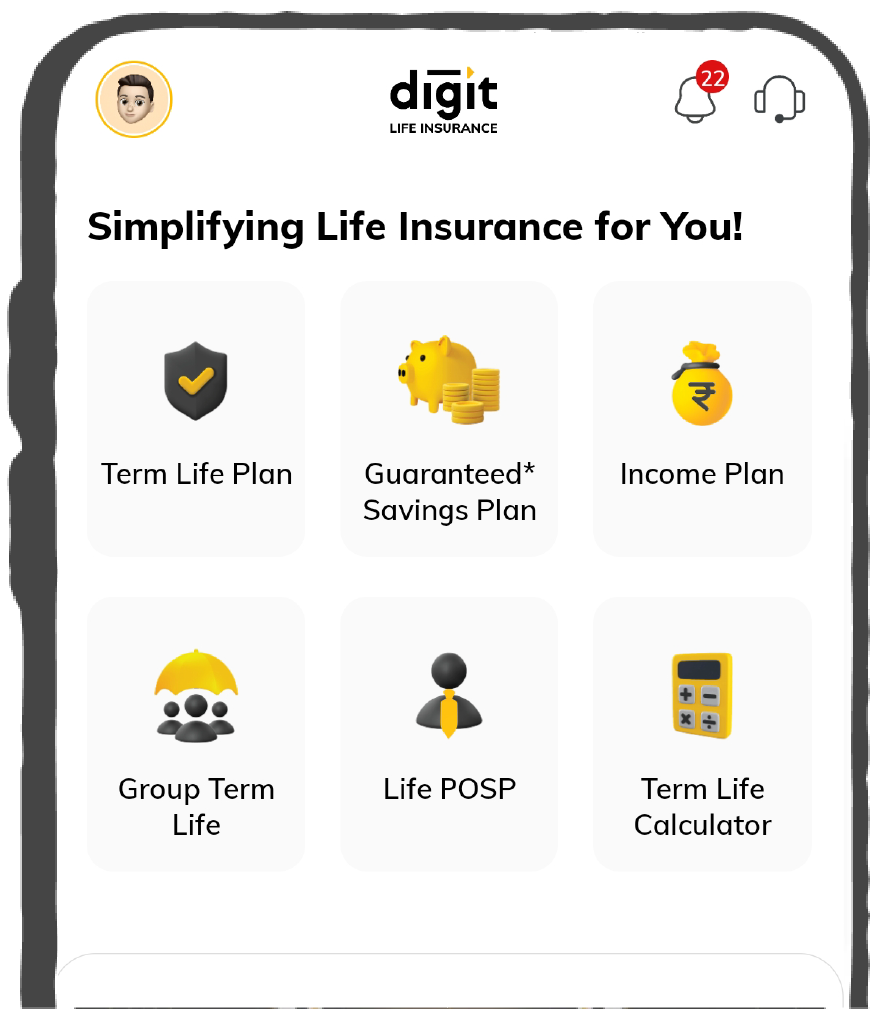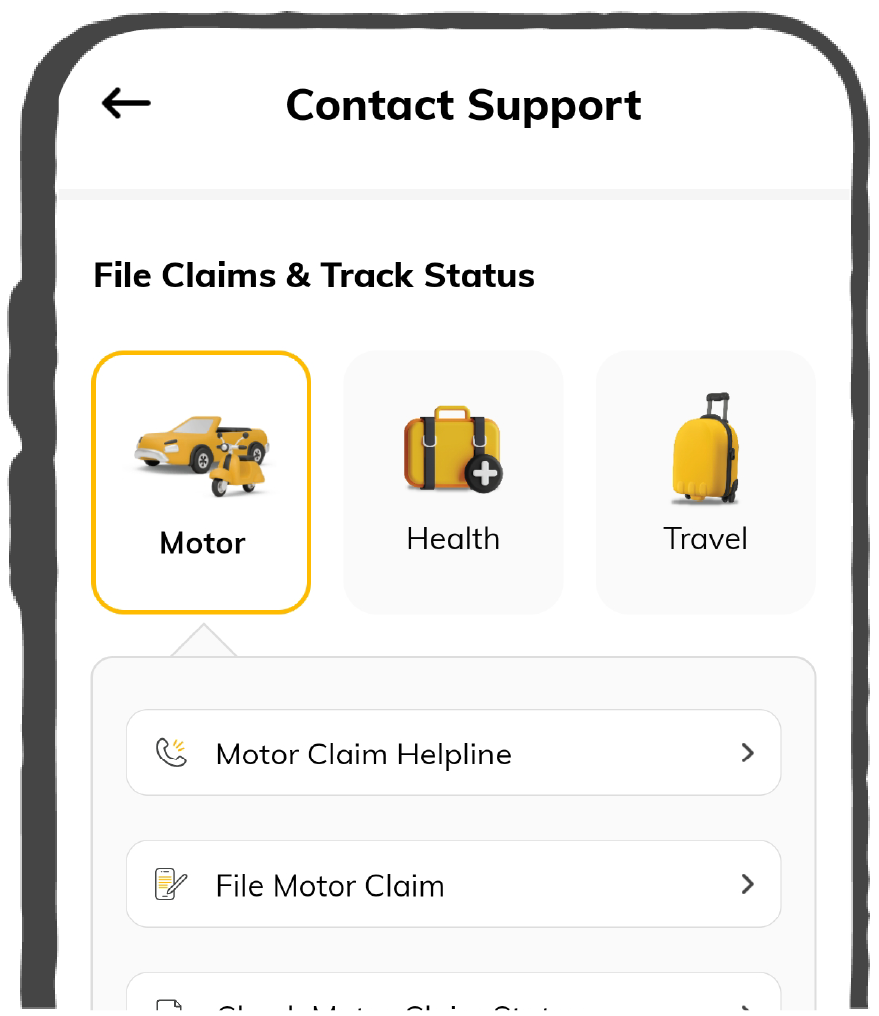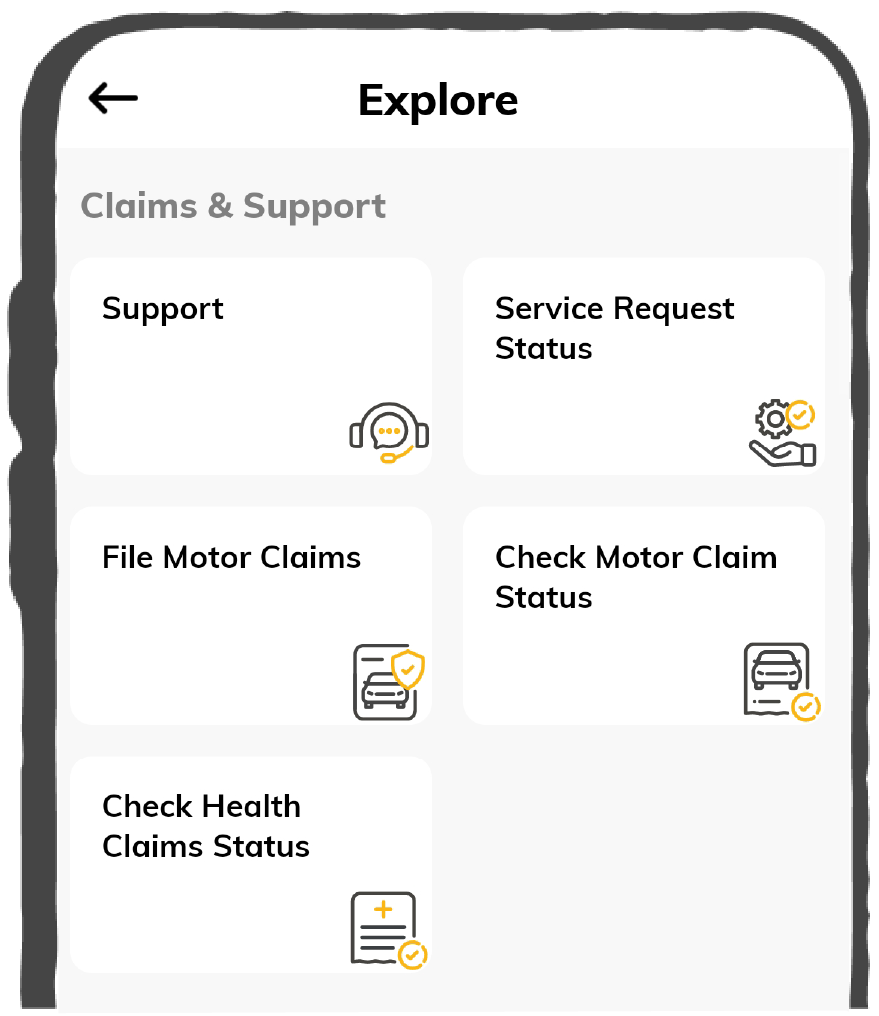
Check Credit Score for FREE
Instant in 2 Mins. No Impact on Credit Score

Income Tax Slabs & Rates for FY 2025-26 (New and Old Tax Regimes)
The accurate payment of taxes is important as it is the pivotal source of revenue for the Government. This amount collected as income tax in India is used for different public development projects and welfare activities.
Moreover, tax rates are mostly variable in nature and are subject to change based on the new proposition passed by the Government of India. In other words, this means that in every financial year, some changes will be incorporated that taxpayers must be aware of.
Since FY 2025-26 has begun, it is important to know the new tax slabs to file income tax successfully. Moreover, knowing the new tax regime will allow taxpayers to understand their tax dues and pay them before the return filing date.
For FY 2023-24, taxpayers eligible to pay taxes will have to pay the amount in the Assessment Year 2024-25, and so on. So, to accurately compute the tax rates for the ongoing FY 2025-26, let's understand the new tax rates for individuals. So, without further adieu, let’s begin!

Table of Contents

Budget 2025-26 Key Highlights
Here are the changes proposed by Budget 2025, summed up in a table:
Income Tax Slabs for Individuals for FY 2025-26 (AY 2026-27)
Your income is taxed based on the income tax slabs in India under the old and the new tax regimes. While the new income tax slab rates are similar for all age groups, the slab rates under the old tax regime are divided into three categories depending on their age.
Check out the different income tax slab rates for both regimes here.
Income Tax Slabs for FY 2025-26 (AY 2026-27) - New Tax Regime
The Union Budget of February 2025 has proposed changes in the income tax slabs of the New Tax Regime, which will be applicable for computing tax from April 1, 2025 onwards. Here are the new tax slabs:
Under this revised tax structure for FY 2025-26, individuals with earnings up to ₹12,00,000 will not have to pay any tax thanks to an increased rebate of ₹60,000.
Further, for salaried individuals, the tax liability becomes zero for incomes up to ₹12,75,000, as they can avail the benefit of standard deduction which is up to ₹75,000.
Changes in the Proposed New Tax Regime for FY 2025-26 (AY 2026-27)
In addition to the changes made in the previous year’s budget, the Union Budget 2025 proposed these major changes in the new tax regime that would be applicable for the ongoing fiscal year, effective from April 1, 2025.
The budget hiked the basic exemption limit to ₹4 lakh, which is an increase of ₹1 lakh from the previous fiscal year.
The zero-tax income threshold tax rebate under Section 87A has been increased to up to ₹12 lakh. For FY 2024-25, this rebate was up to ₹7 lakh. However, the rebate is not available for income taxed at special rates (e.g., capital gains under section 112A).
After Budget 2025, salaried taxpayers will not have to pay taxes up to ₹12.75 lakhs, since they can also avail of the benefit of ₹75,000 standard deductions.
The budget also extended the highest income tax rate of the 30% tax bracket from ₹15 lakh to ₹24 lakh.
The Budget also provided a marginal relief benefit under Section 87A for incomes up to ₹12.75 lakh. It ensures that taxpayers whose income exceeds ₹12 lakh by a small margin do not have to pay significantly more tax.
How Will Income up to ₹12 Lakhs be Tax Free?
If your income is up to ₹12 lakh, the tax payable on it (other than income chargeable to tax at special rates such as capital gains on listed equity shares, etc.) would be zero because the Budget 2025 has increased the benefit of rebate as per Section 87A from ₹25,000 to ₹60,000.
So, if your computable tax comes out to be ₹60,000 with a ₹12 lakh income, the rebate would be applied to it, bringing down the tax to zero.
For example, if your income is ₹11,50,000, then,
Capital gains on listed equity shares: ₹1,50,000
Total income: ₹11,50,000
Tax on normal income: ₹40,000
Tax on special income: ₹18,750
Rebate under section 87A: ₹40,000
So, tax liability (excluding cess): ₹18,750
What is Marginal Relief & How it is Calculated?
Marginal relief is a tax benefit provided under Section 87A that ensures that taxpayers whose income exceeds ₹12 lakh by a small margin do not have to pay significantly more tax.
Marginal relief is applicable to incomes up to ₹12.75 lakh, after which normal tax rates apply, as per the IT slabs. Here’s how:
Different Tax Scenarios under New Tax Regime FY 2025-26 (AY 2026-27)
Here are some different scenarios to help you understand tax liability under the new tax regime for FY 2025-26.
Scenario 1 – Income ₹10 lakh
Since your taxable income is below the ₹12 lakh slab, your total tax payable will be zero as you will get the full Section 87A rebate.
So, total tax payable = ₹0
Scenario 2 – Income ₹12.75 lakh
Using the benefit of ₹75,000 standard deduction, your taxable income will come down to ₹12 lakh.
Now, your income is qualified for the 100% rebate, leading to zero tax liability.
So, total tax payable = ₹0
Scenario 3 – Income ₹13 lakh
Since your income here exceeds ₹12.75 lakh, you can no longer avail the rebate.
So, taxable income after standard deduction = ₹13 lakh - ₹75,000 = ₹12.25 lakh
Tax Calculation on ₹12.25 lakh:
Total tax before marginal relief = ₹63,750
With marginal relief, applicable tax liability = ₹25,000 + cess
Income Tax Slabs for FY 2025-26 (AY 2026-27) - Old Tax Regime
For the FY 2025-26, the Income Tax Slab Rates for Individuals and HUF below 60 years of age as per the existing (old) income tax regime remain unchanged, and are as follows:
You will also be levied with an additional 4% Health and Education cess, which is applicable to the tax amount calculated.
Income Tax Slabs for Individuals for FY 2024-25 (AY 2025-26)
Income Tax Slabs for FY 2024-25 (AY 2025-26) - New Tax Regime
For FY 2024-25, the revised tax rates for the new tax regime are as follows:
On top of this, you will also be levied with an additional 4% Health and Education cess, applicable to the tax amount that is calculated above.
Income Tax Slabs for FY 2024-25 (AY 2025-26) - Old Tax Regime
The Old Tax Regime for FY 2024-25 for resident individuals and HUF below 60 years of age and NRIs is as follows:
Some key important points to remember while computing income tax for the financial year 2025-26 are:
Since the passing of the Finance Act 2020, individuals and HUF have the option of paying taxes under either the old or new tax regimes. The new tax regime allows both resident and non-resident individuals, as well as HUF, to pay taxes at a reduced rate.
Anyone opting for this concessional new tax regime would not be able to claim a number of tax deductions and exemptions. This includes the standard deduction, HRA, LTA, and deductions under Section 80C, Section 24(b), Section 80D, Section 80E, Section 80TTA, Section 80 TTB, etc.
Income Tax Slabs for Senior and Super Senior Citizens for FY 2025-26 (AY 2026-27)
In India, an individual between 60 - 80 years of age is a senior citizen, while an individual above 80 is a super senior citizen. Here are the IT tax slabs for them.
Income Tax Slabs for FY 2025-26 - New Tax Regime (Same for Senior and Super Senior Citizens)
The Union Budget 2025 revised the tax slab rates under the new tax regime for FY 2025-26 (AY 2026-27), which are the same for all taxpayers irrespective of their age, which is as follows:
Income Tax Slabs for Senior Citizens for FY 2025-26 - Old Tax Regime
For taxpayers between the ages of 60 and 80, the rate of taxation under the old tax regime is the same for financial year 2024-25, which is as follows:
Along with this, you will also be levied with an additional 4% Health and Education cess, which is applicable to the tax amount calculated.
Income Tax Slabs for Super Senior Citizens for FY 2025-26 - Old Tax Regime
For taxpayers above 80 years of age, the rate of taxation under the old tax regime is the same for financial year 2025-26, which is as follows:
Super-senior citizens are also liable to pay an extra 4% Health and Education Cess on the tax amount calculated.
Income Tax Slabs for Senior and Super Senior Citizens for FY 2024-25 (AY 2025-26)
Income Tax Slabs for FY 2024-25 - New Tax Regime (Same for both Senior and Super Senior Citizens)
Under the new tax regime for FY 2024-25 (AY 2025-26), the tax rates are the same for all taxpayers, irrespective of their age, which is as follows.
Income Tax Slabs for Senior and Super Senior Citizens for FY 2024-25 - Old Tax Regime
For taxpayers between the ages of 60 and 80 (senior citizens) and taxpayers above 80 years of age super-senior citizens), the rate of taxation under the old tax regime is the same for both financial years 2024-25 and 2025-26, calculated as per their respective income tax slabs.
Additionally, taxpayers belonging to both the categories are also liable to pay an extra 4% Health and Education Cess on the tax amount calculated.
Surcharges for Income Exceeding ₹50 Lakhs for FY 2025-26
For computation purposes, here are the surcharges to be followed to assess tax for the previous and ongoing fiscal year. These surcharges are for individuals with a taxable income exceeding ₹50 Lakh are being levied since April 1, 2023.
Note that before Budget 2023, the highest surcharge on income over ₹5 Crore was 37%, which has been reduced to 25% in the new tax regime only, effective from April 1, 2023. All the other surcharge rates remain the same in both old and new tax regimes.
Income Tax Rates in India for Domestic Companies for FY 2025-26
While the above income tax slabs in India are valid for individuals and HUFs, the taxation slabs applicable for domestic companies are different. The following tax rate surcharges remain unchanged for the financial year 2024-25.
Apart from these income tax rates in India, domestic companies will also be levied the following cess and surcharges –
Health and Education Cess – 4%
However, it is crucial to remember that this surcharge rate for companies that have opted for taxability under Section 115BAA and Section 115BAB will be 10%, regardless of their total income amount.
Key Points to Remember About Income Tax Rates in India
Now that we have discussed at length about tax-slabs and the limit for income tax exemptions in India, let us summarise the key points under it.
Everyone earning income in India is liable to pay income tax. The income tax department has fixed five heads under which taxable income is calculated. These are:
Salary
Income from House property
Capital gains
Income generated from businesses and other professions
Other income sources include interest earned on fixed deposits and savings accounts, lottery, etc.
Every income, except capital gains, is taxed according to the income tax slab rate in India. Capital gains are taxed based on the nature and holding period of the asset classes.
Indian residents are liable to be taxed on their global income in India, which includes income earned both in India and abroad. An individual's residential status is determined separately for each financial year.
You should check your income tax exemption in India and claim it while computing your total taxable amount.
Your income tax returns should be filed before July 31st, 2025, for FY 2024-25.
With such information at your disposal, the process of evaluating your income tax liabilities can become extremely simple.
So, make sure you look through the tax slabs, determine the one applicable to you, and compute your total tax payable well before this financial year is over to avoid the risks of missing the income tax filing online deadline!
Tips to Save Income Tax if You are a Salaried Individual
If you are a salaried employee, there are several legitimate ways through which you can save tax payments under the Income Tax Act of 1961. Some of the more comprehensive ways to do so include investing in the likes of the National Pension Scheme, tax-saving mutual funds, insurance policy premiums, health insurance policies, etc.
Following is an elaboration on a few ways through which you can reduce your income tax liabilities if you are a salaried employee:
Income Tax Deductions Under Section 80C
Under this section of the Income Tax Act, you can claim various deductions from your total income and reduce your tax payment liability by bringing down your total taxable income.
This section allows a deduction of up to ₹1.5 lakh of your total taxable income and can be availed by individuals and HUF. Following are a few investment options and schemes for which Section 80C is applicable:
- Tax-saving fixed deposit
- Equity Linked Savings Schemes
- National Saving Certificate
- National Pension Scheme
- Employees Provident Fund
- Senior Citizens Savings Scheme
- Public Provident Fund
- National Saving Certificate
- Sukanya Samriddi Yojana
- Health Insurance Premiums
Income Tax Deductions Under Section 80D
Under Section 80D of the Income Tax Act, 1961, you can avail of a deduction of up to ₹25,000 on your Health Insurance premium payments for self or family. Further, for premium paid for senior citizens, the deduction limit is extended to ₹50,000. For health check-ups, amounting up to ₹5,000 are also allowed for deduction.
Again, if you are paying premiums for both yourself and your senior citizen parents, you can avail of a deduction of up to ₹75,000 on your premiums per annum.
Deductions of Charitable Donations Under Section 80G
There is no upper limit on the deductions that can be claimed for charitable donations. However, there are specific rules that you must adhere to. For instance, in the case of most NGOs, you can avail of a deduction of up to 50% of the donated amount and up to 10% of your total adjusted income.
Deductions for Loan for Higher Studies Under Section 80E
Under this section, deductions are available on the interest paid on the EMI of education loans paid for pursuing higher studies. The loan must be taken from a nationalised or private bank or any financial institution by the individual for himself, his spouse, or children to claim this deduction.
Apart from these, you can also consider contributing to the National Pension Scheme, avail deductions on your home rent, deposit in a savings account, etc., to save on your tax payments.
However, remember to look over the details of each scheme and investment option before you decide to take advantage of their benefits!
You May Also Like to Read













